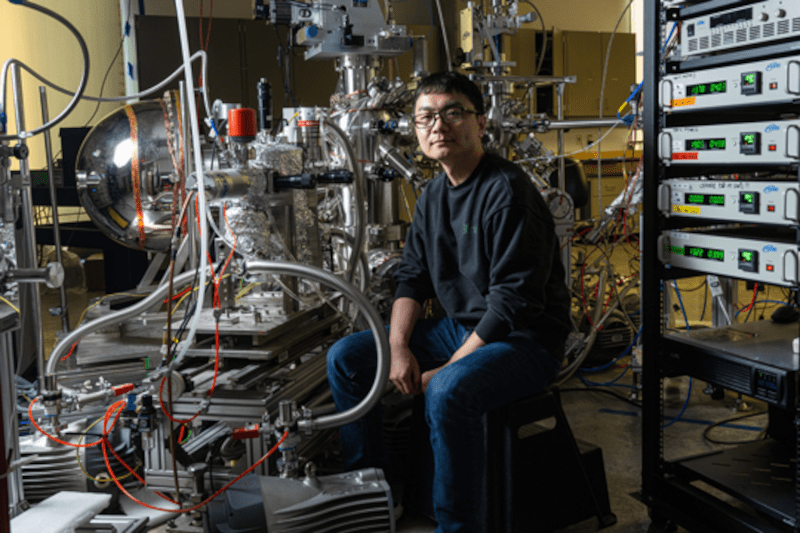Researchers at Rice University have found an alloy of copper, vanadium, and sulfur that forms crystals that, due to quantum effects, can trap electrons. This can produce flat bands, which have been observed in 2D crystals previously. The team’s results are the first case of a 3D crystal with that property.
The flat band term refers to the electron energy bands. Normally, the electrons change energy levels based on momentum. But in a flat band, this doesn’t occur. This implies that the electrons are nearly stationary, which leads to unique optical, electronic, and magnetic properties. In addition, flat-band materials often exhibit unusual behavior, such as exotic quantum states, ferromagnetism, or even superconductivity.
It is possible that flat band materials will play an important role in future quantum computers. Until now, the effect has been seen in twisted bilayer graphene and Kagome lattices.
According to the researchers, the electrons stop due to electronic wave functions destructively interfering with each other like ripples on a pond. The actual paper is available, although, unfortunately, behind a paywall. You can, however, find the preprint version at arXiv.
Maybe flat band materials will lead to real room-temperature superconductors. Maybe. If you just want to make your own metal crystals, you can, but don’t expect exotic properties.

















I read that last line as; “if you want to make your own meth crystals”
B^)
If you want to do that, I’m sure you can too, but beware of exotic properties.
Why’s it always seem like the more detailed and esoteric the material/synthesis/whatever is, the less we actually end up using it? Is this some sort of conjuring ritual for grant money?
No, for that you need a bag of chicken bones and crow beaks.
Some time it just takes a while from discovery to useful.
The Hall effect was discovered in 1879.
https://en.wikipedia.org/wiki/Hall_effect
Hall effect sensors didn’t become common (or even commonly known) until integrated circuit technology caught up enough to make a small, simple sensor that could be easily used.
https://en.m.wikipedia.org/wiki/Hall_effect
Call it 100 years between discovery and common use.
Maybe in 2123 we’ll be using flat band crystals everyday and think as little of it as we think of the Hall effect when ordering a 30 cent part that uses the Hall effect to accurately measure current or motor position.
At a wild guess – making complicated and esoteric materials is not quickly or easily scaled up to mass / cheap production.
And then again. What might be seen as complicated today might be reasonably simple tomorrow.
^This.
The GaN based materials we’re using now were lab projects in the 80’s/early 2000’s. It took a long time and a lot of work by a huge number of very smart people to get to where we are now. Among other things to figure out were how grow the materials with sufficiently few defects to be useful, control both n- and p-doping, make useful devices reliably etc etc. Even now GaN still has a lot of defects but the ones that impact the useful material properties are largely under control. Every material is different and knowledge of one material system is only partially transferable to other materials. The rest we have to figure out.
And even for all that, in the end some things just flat won’t work because physics gets in the way. Try doping ZnO p-type for example. n-type is easy. Nobody knows how to do p-type yet. Aside: yes I know about all the alleged “p-type ZnO” papers floating around, and to quote a colleague “reports of p-type ZnO are like UFO and Elvis sightings”. The stuff would be fantastic if we can get it to work, but it looks like physics won’t let us and nobody could possibly know that up front. It takes work by smart people, time and the resources to do it.
I can’t add anything intellectual, but… cool lab!
How good is this at stopping high energy electrons, e.g. beta particles? Could this lead to a way to capture electricity directly from beta emitters?
And how is that a METAL crystal?
It is a sulfide crystal.
Also its not an alloy. It has the defined composition CuV2S4, thus the correct term would be compound.
That lab looks like pure mad scientist grade chaos. Love it!
I hope they give tours to high school kids. Imagine being able to say that you saw a frozen electron in person!
I *think* this is even something that we could 3D print. I’ve read a lot of papers from the last 5 years with copper, vanadium, and various alloys (including alloys with nonmetal components such as phosphorous, carbon, and sulfur) all being electrochemically 3D printed. Should be interesting to see what kind of technological uses this material will have.